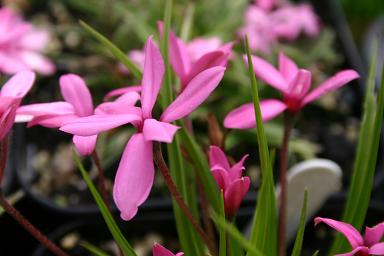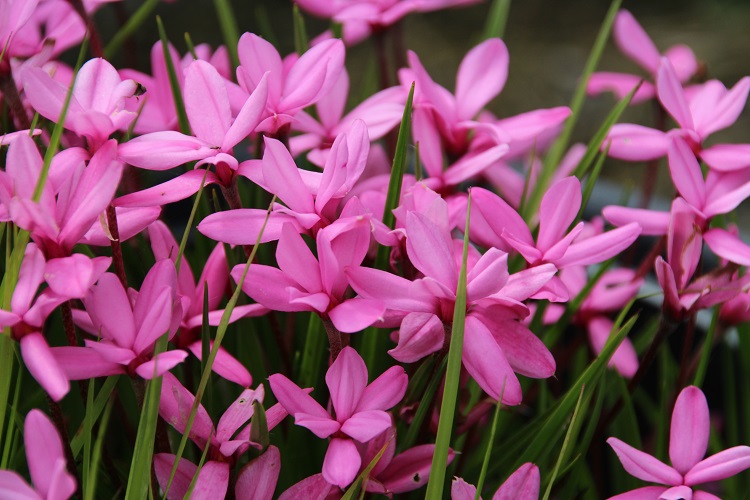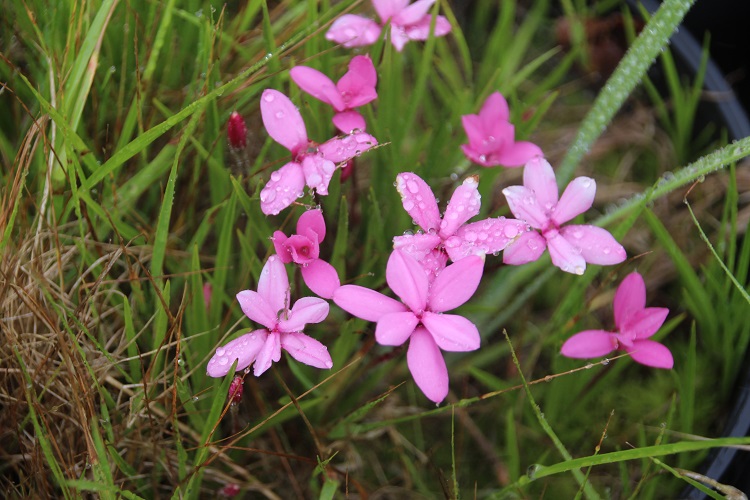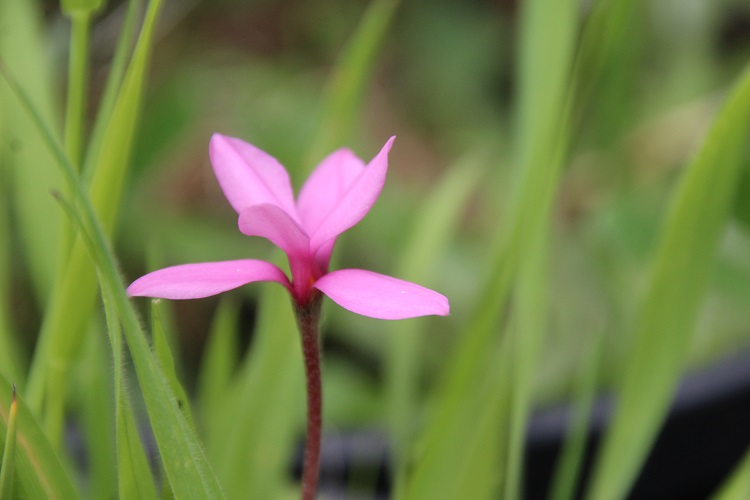 |
Non-specific pink stitched densely across the pot like a painstaking mediaeval tapestry. Brian Mathew says of R. milloides "Mrs Helen A. Milford, well known for her collections of living material in the Drakensberg also introduced further plants of R. baurii and is attributed with the introduction of R. milloides; however the description of the plant which received a Preliminary Commendation in 1949 under this name suggests that it was misidentified and was almost certainly R. thodiana. The true R. milloides was not introduced until 1971 when Miss C. Williamson sent some plants to Mr W. Marais at Kew." Keith Clarke says: "Rhodohypoxis are usually produced from deciduous nfibrous coated rhizomes, which produce tufts of channelled, narrow, usually hairy leaves, up to 7.5cm tall. An exception is R. milloides, which is stoloniferous with tufts of narrow, glossy green leaves and red flowers." |
|
| 22nd June 2007 | ||


